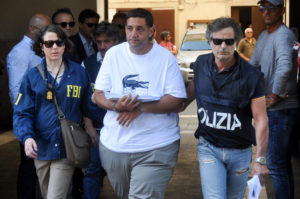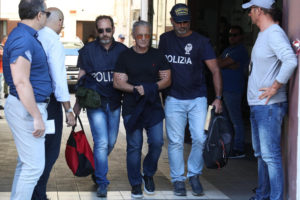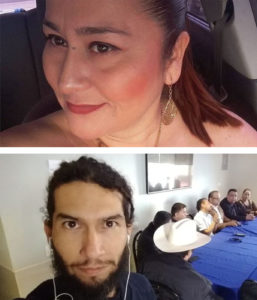
Organized Crime Roundup: Mobs killed 1 million from 2000-2017, big Mafia takedown in Italy and more
United Nations report says the Americas are organized crime’s most violent region

Criminals kill far more people than do armed conflicts and terrorist attacks put together, and organized crime groups and street gangs have slain about as many people as all the world’s wars in the 21st century. That’s the conclusion reached by the United Nations Office on Drugs and Crime in a report published last month analyzing homicides committed worldwide.
If the trend of increasing rates of homicide continues, the U.N. will not be able to meet its “sustainable development goal,” set in 2015, to “significantly reduce all forms of violence and related deaths everywhere” by 2030, the agency reported.
The Vienna, Austria-based UNODC, in its report “Global Study on Homicide 2019,” found that the number of homicide victims grew by 4 percent from 2015 to 2017. Among the factors cited as driving murders in regions and individual countries are inequality, unemployment, lack of educational attainment, political instability, absence of the rule of law, age, gender and organized crime.
One the UNODC’s top policy recommendations, in order to have a chance at meeting its goal for reducing homicides by 2030, is “devoting more attention to combating organized crime.”
“Since the start of the 21st century, organized crime has resulted in roughly the same number of killings as all armed conflicts across the world combined,” the agency stated. “Moreover, just like armed conflicts, organized crime destabilizes countries, undermines socioeconomic development and erodes the rule of law. Unfortunately, the financial resources and political attention currently devoted to this problem at the international level are inadequate.”
From 2000 to 2017, organized crime killings claimed the lives of about 1 million people, roughly the same number as were killed in armed conflicts during that time, the U.N. agency said.
“It is estimated that an average of roughly 65,000 killings every year were related to organized crime and (street) gangs” over the 17-year period, “and that up to 19 percent of all homicides recorded globally were related to organized crime and gangs.”
In 2017 alone, criminal acts caused many more people to die — 464,000 — than wars (89,000) and terrorist violence (26,000).
While homicide rates have declined in Europe and Asia over the past 30 years, rates in the “Americas” (North, Central and South America) and Africa have grown, producing a “‘violence gap’ (that) is not narrowing but actually widening further.”
Nations within the Americas showed the highest propensity toward committing homicides. The Americas reported 173,000 murder victims in 2017, which is 37 percent of the world’s total, even though the area includes only 13 percent of the global population. Further, the murder rate of 17.2 deaths per 100,000 people in the Americas for the year was the highest recorded since 1990.
The next highest region was Africa, with 163,000 persons murdered, or 13.0 per 100,000.
The regions with the lowest murder rates were Asia, with 104,000 victims, or 2.3 per 100,000, and Europe, with 22,000 homicides, or 3.0 per 100,000.
Brazil specifically endures the highest number of killings, 58,000 in 2015 alone, than all other countries in Latin America. One factor is the prevalence of criminal street gangs there, the U.N. agency said.
In Mexico, where the fragmentation of drug cartels such as the Sinaloa Federation and Los Zetas has produced disorganization and infighting over the last five years, murders have surged. In 2017, homicides surpassed 30,000, an all-time high.
In fact, 98 percent of the world’s gang-related homicides between 2005 and 2017 happened in just 12 nations located in the Western Hemisphere.
“The countries that reported a large share of homicides involving organized crime or gangs are concentrated in Latin America and the Caribbean, which is also the region with the highest recorded homicide rates in the world,” the agency reported.
For its study, the UNODC defined “organized criminal groups” as “those engaged in a wide range of profit-driven criminal enterprises.” Many derive most of their profits from extorting businesses to pay “protection” money from competing groups and the one committing the extortion.
The agency’s definition of “gang” refers to street gangs, not including prison or outlaw motocycle gangs. Street gangs, the UNODC said, tend to concern themselves more with defending a common identity and territory than seeking material gain.
19 suspected Inzerillo, Gambino hoods arrested in Sicily and New York


Anti-mafia police in Palermo, Sicily, used the social media outlet WhatsApp to signal their FBI colleagues in the U.S. to commence a joint raid last month that resulted in the arrest of 19 suspects, including members of the Inzerillo and Gambino crime families.
The Italian anti-mafia police’s encrypted message read: “In Palermo, it’s 3am and muggy. In New York, its 9pm and looks like it might rain.”
In Palermo, Italian police nabbed 18 members of the two families, among them Tommaso and Francesco Inzerillo, Rosario “Sal” Gambino and Salvatore Gambino, the mayor of Torreta, Sicily, one of a few small villages where the families maintain influence over local commerce.
One other man was arrested in New York. The series of raids on July 17 involved about 200 Italian police officers and FBI agents.
“A WhatsApp message is sent to the joint squad,” Italian police said in a statement. “It’s the sign the Italian police and their FBI colleagues have been waiting for because from Sicily to the U.S., the old Mafia has returned.”
Members of both families left the United States to live in Sicily a few years ago, with some of the Gambino clan still holding court in New York. The FBI and Italian police investigated the families’ activities in both countries, a probe known as “New Connection.”
The Inzerillo and Gambino members allegedly worked together in Sicily in illegal sports gambling, extortion and the food supply business.
Chinese mafia groups extorting shopkeepers in Argentina
Authorities in Argentina are having trouble investigating Chinese crime groups in Buenos Aires that are extorting and attacking members of the Chinese community who own grocery stores there.
Shop owners have recently received letters in Mandarin demanding they pay the equivalent of $30,000 to $50,000 for protection or face violence if they fail to do so, according the organized crime news website InSight Crime.
In another case, a trio of Chinese mafia thugs allegedly fired shots at an employee of a supermarket targeted by a crime group outside Buenos Aires.
Police in Spanish-speaking Argentina are finding it difficult to investigate because of the language barrier and success by the Chinese mafia to intimidate Chinese locals into not translating or otherwise cooperating with officers.
The situation is similar to the Black Hand extortion schemes in U.S. cities in the first two decades of the 20th century. The Black Hand members were Italians who extorted fellow Italians.
Official corruption is also part of the problem. Recently, the chief of Argentina’s migration commission was arrested on suspicion of taking bribes from the Chinese crime group Pixiu, which ran a human trafficking racket.
In July, gunmen shot and killed three Chinese nationals employed at a supermarket near Buenos Aires. Two of the suspected shooters, both Chinese citizens, were taken in into custody days later in Dubai while traveling back to China.
Toronto area had 36 gangland-related homicides in 2018
Organized crime groups committed 36 murders last year in the Greater Toronto Area, the highest number of any area in Canada, the Toronto Star reported.
Other large Canadian cities also experienced an alarming number of gangland slayings by Mafia, street gang and other crime organizations. Montreal had 24 victims of rubouts while 20 took place in Vancouver, 14 in Edmonton and five in Ottawa.
The Toronto area saw 37 such slayings in 2017.
The victims in 2018 included 26-year-old Chatelle Almeida, a Toronto woman shot dead beside another victim, Cosimo Ernest Commisso, 33. Both were outside a home owned by Commisso’s parents when gunmen fired six shots at them.
Commisso was a relative of Cosimo “The Quail” Commisso, from Siderno in southern Italy and who is regarded as a boss in the ’Ndrangheta crime family.
Briefly noted

The U.S. Treasury Department announced this month it has designated three Chinese nationals, Fujing Zheng, Zheng’s father Guanghua Zheng, Xiaobing Yan, and the Zheng Drug Trafficking Organization “as significant foreign narcotics traffickers” under the federal Kingpin Desigation Act. The desination is based on the suspects’ alleged conspiracy to manufacture, sell and distribute synthetic opioids — types of fentenyl — or chemicals used to make the drug. Treasury alleged that Fujing Zheng and Yu, through the Qinsheng Pharmaceutical Company, based in China, “shipped hundreds of packages of synthetic opioids to the U.S.” that has contributed “to the crisis of opioid addiction, overdoses, and death.”… The FBI has warned that foreign crime networks are committing fraud against U.S. subscribers of online dating websites. The agency noted a 70 percent increase in people reporting alleged romance scammers who post faked photos to pose online as active-duty members of the military in need of financial assistance, such as loans for overseas airfare to return home. The communications via social media may last for days or weeks while the “mark” believes the cyber-criminal is interested in them and would like to meet them in the States.…For journalists, Mexico is the deadliest country in the Western Hemisphere, says the Committee to Protect Journalists, a New York-based nonprofit. So far this year, 10 reporters have been assassinated in Mexico, mostly by gunshot. Rafael Murúa Manríquez, who told of being threatened by a criminal gang, was found murdered on January 20 in Baja California. Norma Sarabia, who had reported on alleged involvment by local police in kidnapping conspiracies and received death threats, was shot outside her home in Tabasco on June 11. Jorge Celestino Ruiz Vázquez, a reporter who wrote about municipal government corruption in Veracruz and rebuffed bribe attempts, was gunned down August 2. Then on August 24, police in Estado de México found the body of reporter Nevith Condés Jaramillo, who had been stabbed to death. “Jaramillo had previously said members of organized crime and local authorities had threatened him,” the committee reported.
Feedback or questions? Email blog@themobmuseum.org





